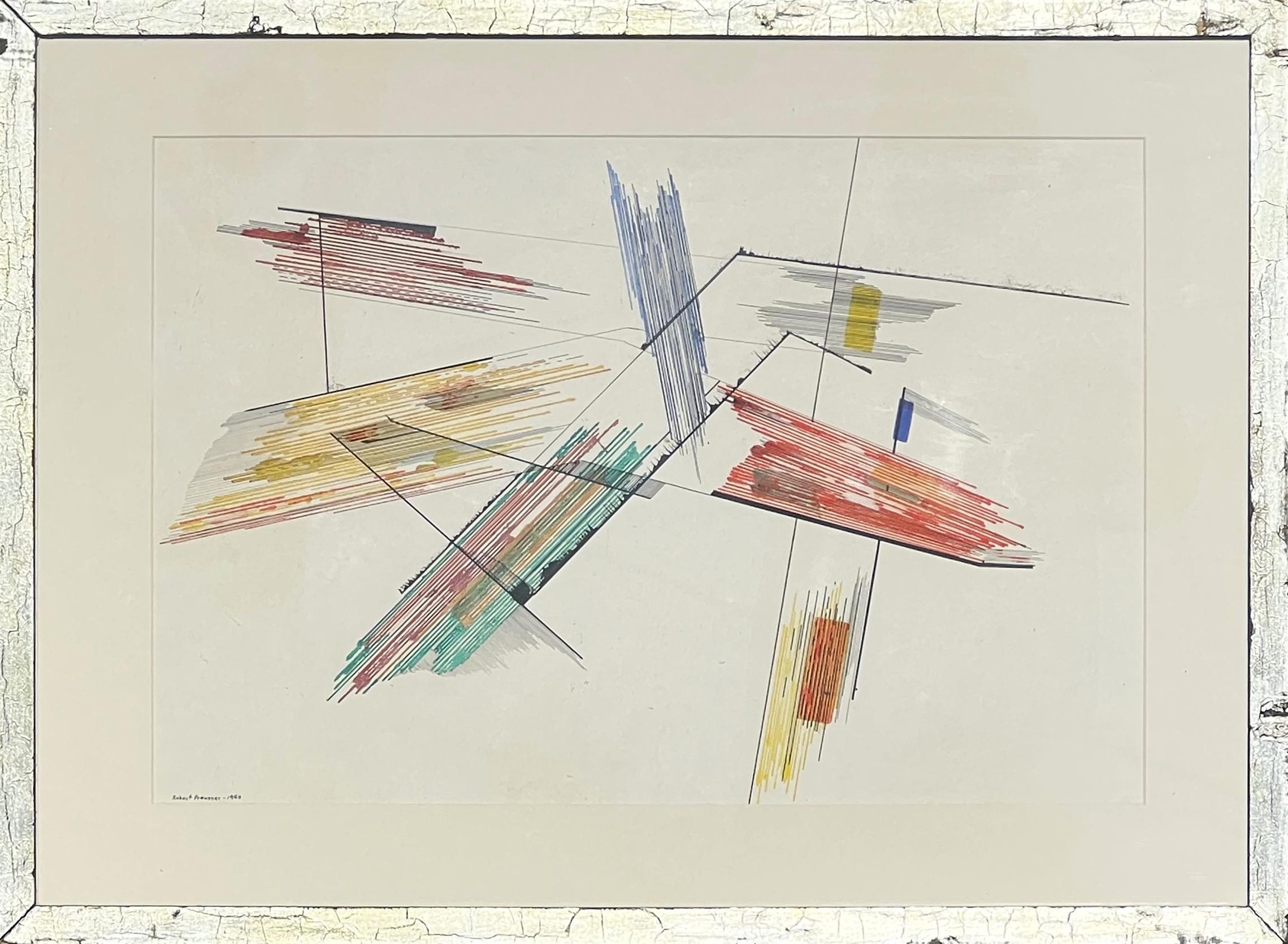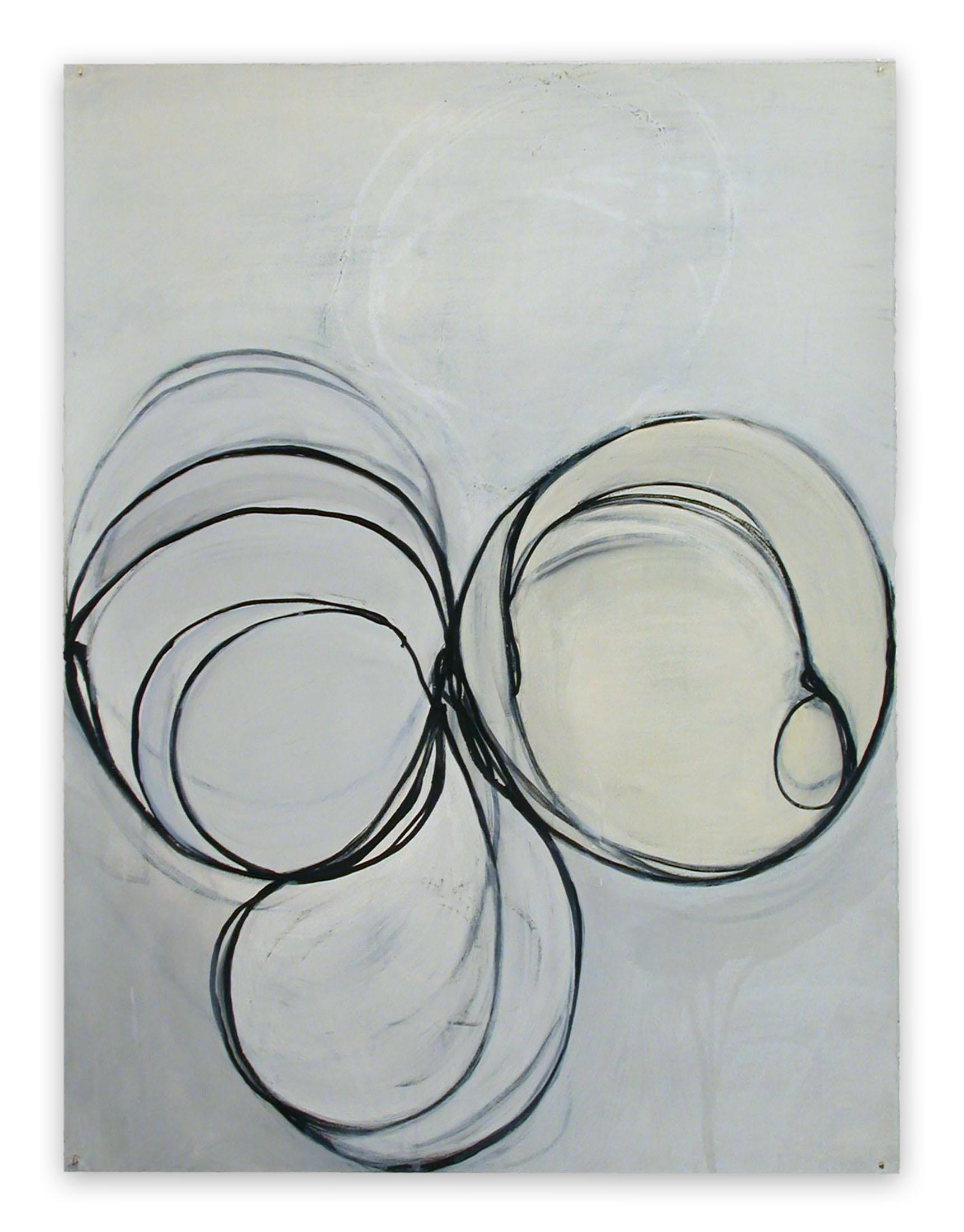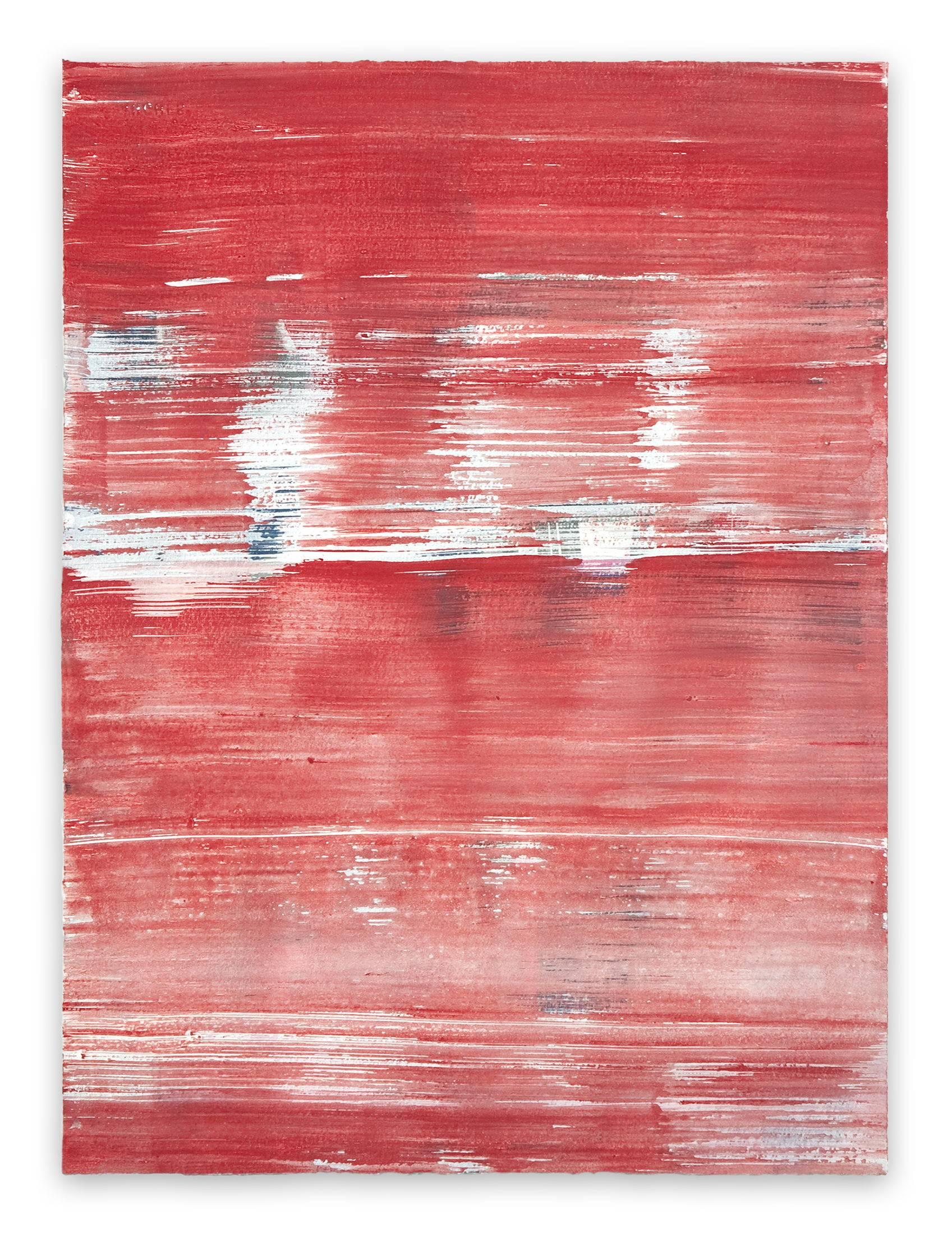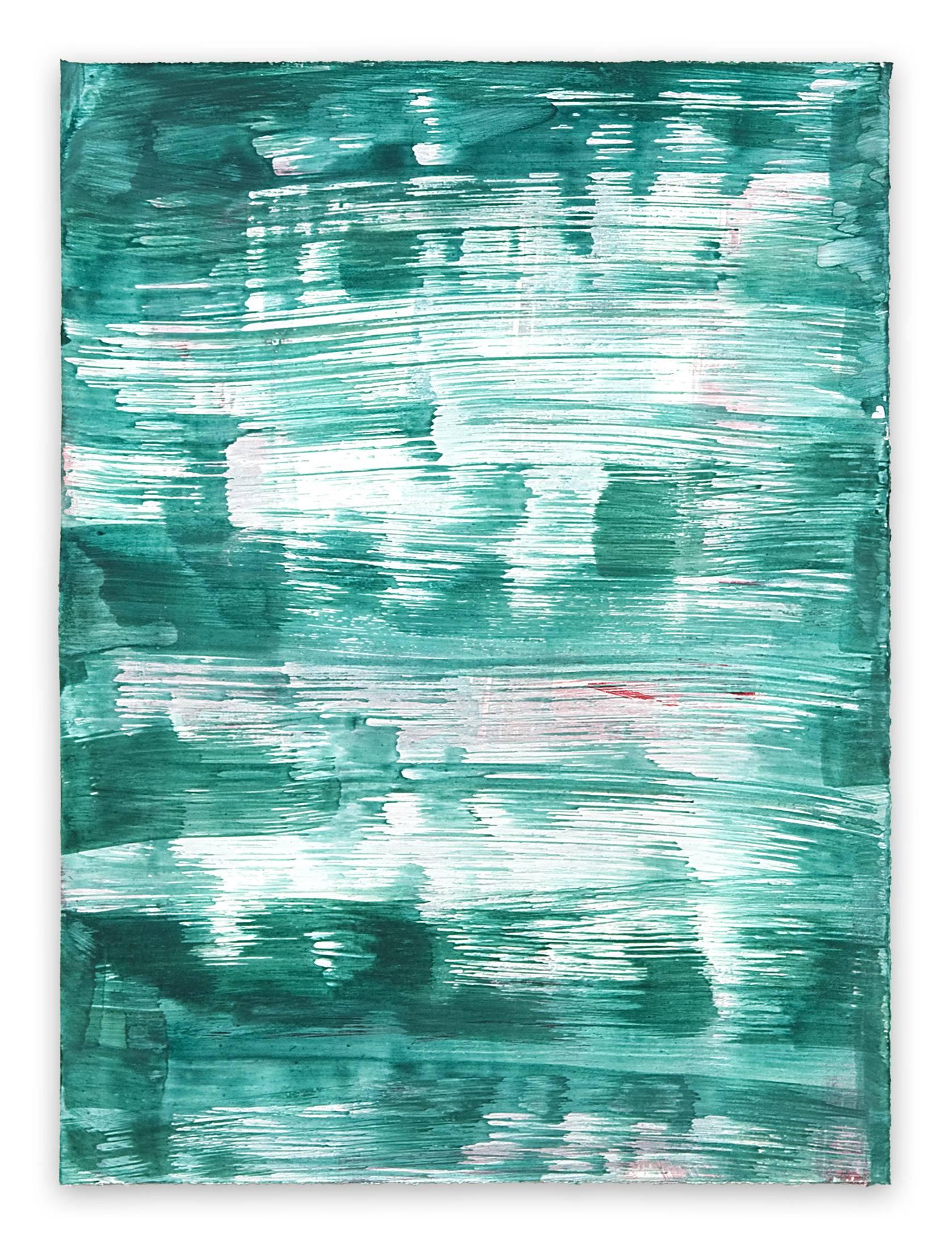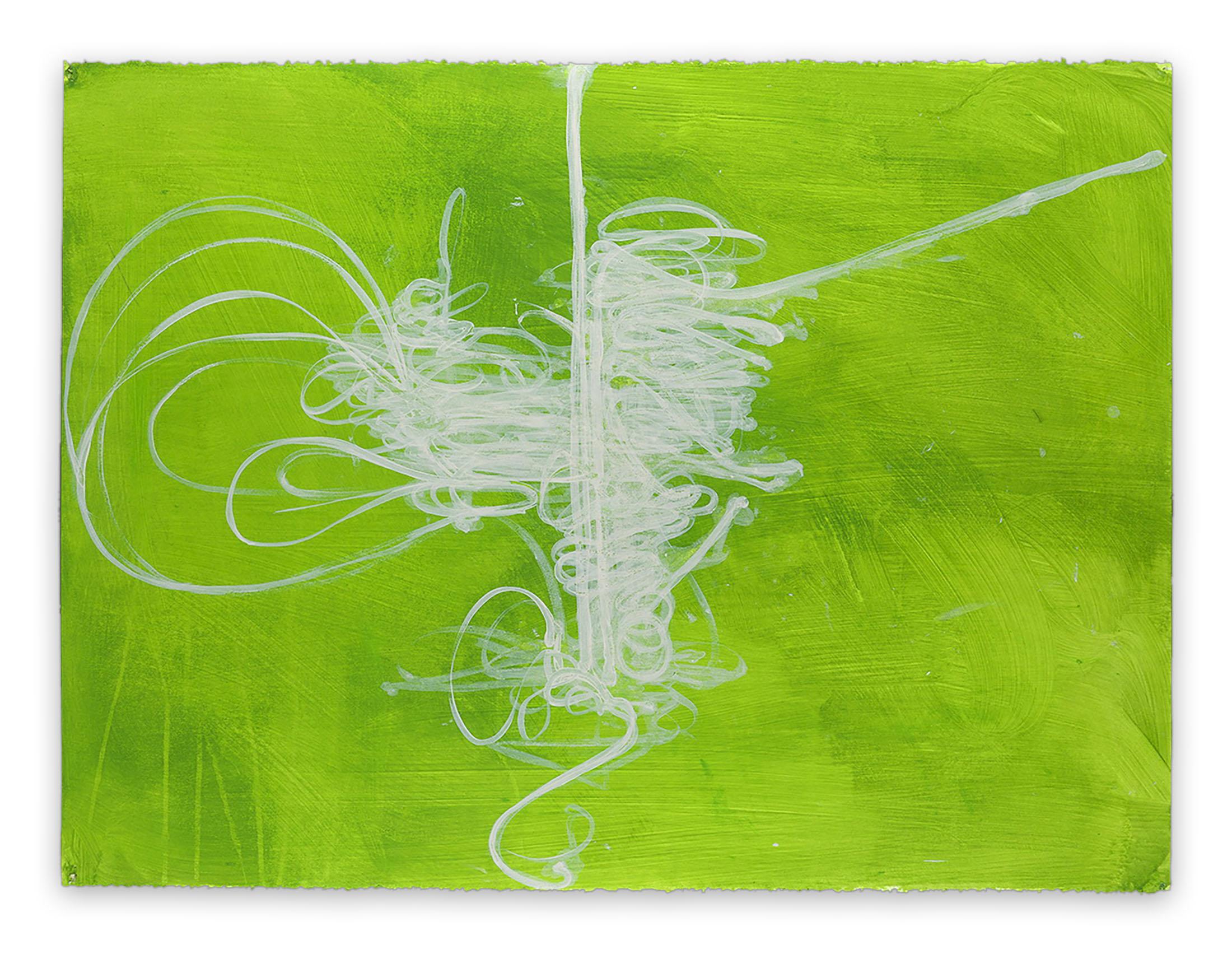Items Similar to Abstract Composition Tempera Painting Russian Soviet Avant Garde Ksenia Ender
Want more images or videos?
Request additional images or videos from the seller
1 of 10
Ksenia EnderAbstract Composition Tempera Painting Russian Soviet Avant Garde Ksenia Ender
About the Item
Dimensions:
25.5 X 20.5 Frame. Artwork measures 23.25 X 18.25
Ksenia Vladimirovna Ender ( Russian Ксения Владимировна Эндер , also Xenia Ender and Kseniia Ender. born 1895 in Sluzk , died 1955 in Leningrad ) was a Russian painter of German descent.
Ksenija Ender was the daughter of a gardener of German descent. Her great-grandfather was a Saxon glassmaker who had settled in St. Petersburg. Like her siblings Boris (1893-1960), Marija (1897-1942) and Yuri (1898-1963), she attended the Petrischule in St. Petersburg , showed strong artistic inclinations and was very interested in music, poetry and theater.
Ksenija Ender studied from 1918 to 1922 in Petrograd in the workshop of the Realism of the Free Artistic Workshops (SWOMAS) (successor organization of the Imperial Academy of Arts ) with Mikhail Vasilyevich Matyushin , in whose avant-garde Sorwed (see and guide) group they entered as well as their siblings Boris and Maria. From 1920 to 1922 she took part in events in memory of Jelena Genrichovna Guro . From 1923 to 1926 she worked as a research assistant in the Department of Organic Culture of the State Institute for Artistic Culture and experimented with space and colors under the influence of Matuskin. Some of her works were shown in 1923 at the painting exhibition Petrograd painters of all directions and in 1924 at the Fourteenth Biennale di Venezia .
From the 1930s Ksenija Ender worked as a designer in an industrial construction office.
The Ender sisters, Maria (1897, St Petersburg — 1942, Leningrad) and Ksenia (1894, Slutsk — 1955, Leningrad) studied from 1918 to 1922 at the Petrograd State Free Art Workshops of Mikhail Matiushin in the Spatial Realism department, and worked in the department of organic culture at GINKhUK (the State Institute of Artistic Culture) also under the direction of Matiushin, Maria from 1923 to 1926 and Ksenia 1923 to 1924. Mikhail Matiushin was an artist, musician, composer, art re- searcher, one of the leading lights of the Russian avant-garde and inventor of the theory of “broadened observation”. In the depart- ment of organic culture at GINKhUK a group of artists, Matiushin’s students, formed an association which they called ZOR-VED (an abbreviation of the words ‘seeing’ and ‘knowing’). Matiushin spoke of a new truth existing in art, a non-figurative figuration. “Figures do not leave the field of vision, they just change into a new form.”
For the artists of the avant-garde, the concept of realism did not mean copying nature. It was no accident that the word “realism” acquired the attribute “spatial”. It became synonymous with a new idea of the universe, of connections with nature. The group’s investigations were mainly concentrated on the problem of the perception of colour in space, of the influence of colour on form and on the connections between colour and sound. The Ender sisters were active participants.
Maria Ender conducted an independent project researching colour, ran the department researching the use of peripheral perception of colour and form and gave 24 lectures at the department’s meetings. She prepared for publication the articles The Laws of Reproduction of Colour Form, Chevreul’s Law of Simultaneous Contrast and Its Relationship to the Principle of Broadened Observation, Colour and Colour Combining, Space and Form and On Supplementary Form. She taught colour studies at the State Art and Industry Technical College (1930), and at the Leningrad Institute of Proletarian Visual Arts (1930–1932). Maria Ender actively collaborated with Matiushin in preparing a colour handbook for publication in 1932. She took part in designing the Soviet pavilion at the World Exposition in Paris in 1937 and the World’s Fair in New York in 1939.
Ksenia also wrote reports at the Institute on various subjects. From 1925 to 1927 she worked as a scientific collaborator at the Decorative Institute. Due to poor health she gave up painting early on and in the 1930s worked as a designer in an engineer’s office. Both sisters participated in the Exhibition of Pictures by Petrograd Artists of All Movements in Petrograd in 1923, and in the 14th Venice Biennale International Art Exhibition in 1924. Landscapes occupy a major place in the oeuvre of Ksenia Ender and it is in these that she uses her experience in “broadened observation”: the purification of light and the revelation of its luminescence, the colour-form connection with the surroundings through “interlinking” colour. The artist highlights simple colour forms which create a slightly slowed-down, peaceful compositional rhythm. Maria Ender was one of the leading theoreticians of the new spatial realism. Her compositions were more dynamic, complex and delicate in their colour characteristics. By finding the graphic “formulae” of objects in nature, stripping all detail, all unnecessary features from their depictions, both artists preserved a connection with the natural origin.
For the artists of the avant-garde, the concept of realism did not mean copying nature. It was no accident that the word “realism” acquired the attribute “spatial”. It became synonymous with a new idea of the universe, of connections with nature. The group’s investigations were mainly concentrated on the problem of the perception of colour in space, of the influence of colour on form and on the connections between colour and sound. The Ender sisters were active participants.
Maria Ender actively collaborated with Matiushin in preparing a colour handbook for publication in 1932. She took part in designing the Soviet pavilion at the World Exposition in Paris in 1937 and the World’s Fair in New York in 1939.
Ksenia also wrote reports at the Institute on various subjects. From 1925 to 1927 she worked as a scientific collaborator at the Decorative Institute. Due to poor health she gave up painting early on and in the 1930s worked as a designer in an engineer’s office. Both sisters participated in the Exhibition of Pictures by Petrograd Artists of All Movements in Petrograd in 1923, and in the 14th Venice Biennale International Art Exhibition in 1924. Landscapes occupy a major place in the oeuvre of Ksenia Ender and it is in these that she uses her experience in “broadened observation”: the purification of light and the revelation of its luminescence, the colour-form connection with the surroundings through “interlinking” colour. The artist highlights simple colour forms which create a slightly slowed-down, peaceful compositional rhythm. Maria Ender was one of the leading theoreticians of the new spatial realism. Her compositions were more dynamic, complex and delicate in their colour characteristics. By finding the graphic “formulae” of objects in nature, stripping all detail, all unnecessary features from their depictions, both artists preserved a connection with the natural origin.
Liudmila Vostretsova, The State Russian Museum, St Petersburg
- Creator:Ksenia Ender (1895 - 1955, Russian)
- Dimensions:Height: 25.5 in (64.77 cm)Width: 20.5 in (52.07 cm)
- Medium:
- Movement & Style:
- Period:
- Condition:Creases to lower edge of paper. Please see photos. otherwise good. in original frame. frame has some minor loss at corners.
- Gallery Location:Surfside, FL
- Reference Number:1stDibs: LU38212801062
About the Seller
4.9
Platinum Seller
These expertly vetted sellers are 1stDibs' most experienced sellers and are rated highest by our customers.
Established in 1995
1stDibs seller since 2014
1,546 sales on 1stDibs
Typical response time: 1 hour
- ShippingRetrieving quote...Ships From: Surfside, FL
- Return PolicyA return for this item may be initiated within 3 days of delivery.
More From This SellerView All
- Modernist Abstract Expressionist Watercolor Painting Bauhaus Weimar ArtistBy Pawel KontnyLocated in Surfside, FLAbstract watercolor composition bearing the influence of the earlier color-block compositions of Paul Klee. Pawel August Kontny, (Polish-German-American artist) He was born in Laurahuette, Poland, in 1923, the son of a wealthy pastry shop owner. In 1939 he began studying architecture in Breslau where he was introduced to the European masters and to the work of some of the German Expressionists, soon afterward banned as "degenerate artists" and removed from museums throughout Germany by the Nazi regime. His studies were interrupted by World War II. Drafted into the German army, traveling in many countries as a soldier, he sketched various landscapes but in 1945, he was captured and held as a prisoner of war in Italy. After the war, he studied at the Union of Nuremberg Architects to help design buildings to replace ones destroyed in the war. He recorded his impressions of the local population and the landscapes through his watercolors and drawings. Pawel Kontny thereafter moved to Nuremberg, Germany, becoming a member of the Union of Nuremberg Architects and helping to rebuild the city's historic center. He soon decided to concentrate on his professional art career. He married Irmgard Laurer, a dancer with the Nuremberg Opera. Pavel Kontny 's career as an artist was launched with his participation in an all German exhibition, held at the Dusseldorf Museum in 1952. He held one-man shows in Germany, Switzerland and the United States. During his trip to the United States in 1960, Kontny became instantly enamored with Colorado, and decided to relocate to Cherry Hills with his wife and two children. He quickly established himself in the local art community, being affiliated for a time with Denver Art Galleries and Saks Galleries. His subject matter became the Southwest. During this time he received the Prestigious Gold Medal of the Art Academy of Rome. His extensive travel provided material for the paintings he did using his hallmark marble dust technique. he also worked equally in pastel, watercolor, charcoal and pencil-and-ink. in a style which merged abstraction and realist styles, influenced by Abstract Expressionist painting and South Western American landscapes. In the early 1960s he was one of only a few European-born professional artists in the state, a select group that included Herbert Bayer (1900-1985), a member of the prewar Bauhaus in Weimar and Dessau, Germany, and Roland Detre (1903-2001), a Hungarian modernist painter. As a Denver, Colorado resident, Pavel Kontny exhibited at galleries and museums throughout the United States, Germany and Japan. There, he was inspired by frequent trips to Native American pueblos in the Southwest, as well as by the study of the Plains Indians of Montana and Wyoming. Over the years Kontny had a number of students and generously helped young artist by hosting exhibitions at his Cherry Hills home. For many years he generously donated his paintings to support charitable causes in Denver. Influences during his European years included German pastelist C.O. Muller, German Informel painter Karl Dahmen and Swiss artist, Hans Erni. In the early 1950s his painting style showed the influence of the Die Brücke (The Bridge), a group of German expressionist artists formed in Dresden in 1905 who had a major impact on the evolution of modern art in the twentieth century in Germany. By the middle of the decade his style incorporated more referential abstraction and total abstraction, resulting in part from his study of Hans Hartung, a German artist based in Paris who exhibited his gestural abstract work in Germany. His work also bears the influence of Sam Francis. The American moon landing in 1969 inspired Paul Kontny...Category
Mid-20th Century American Modern Abstract Drawings and Watercolors
MaterialsWatercolor, Archival Paper
- Post Soviet Nonconformist Avant Garde Russian Israeli Gouache Painting GrobmanBy Michail GrobmanLocated in Surfside, FLMIchail Grobman Gouache and watercolor on paper Hand signed Lower Left and Dated 1964. Described inn Cyrillic Russian verso. Dimensions: L:13.25" W: 11.75". Michail Grobman (Russian: Михаил Гробман, Hebrew: מיכאיל גרובמן, born 1939) is an artist and a poet working in Israel and Russia. He is father to Hollywood producer Lati Grobman and Israeli architect Yasha Jacob Grobman. Biography 1939 – Born in Moscow. 1960s – Active member of The Second Russian Avant-Garde movement in the Soviet Union. 1967 – Member of Moscow Artists Union. 1971 – Emigrates to Israel and settles in Jerusalem. 1975 – Founded the Leviathan group and art periodical (in Russian). Since 1983, he lives and works mainly in Tel Aviv. Awards In 2001, Grobman was a co-recipient of the Dizengoff Prize for Painting. Solo exhibitions 2007 – Last Skies, Loushy & Peter Art & Projects, Tel Aviv (cat. text: Marc Scheps) 2006 – Creation From Chaos to Cosmos, Bar-David Museum of Fine Art and Judaica, Kibbutz Baram (cat. text: Sorin Heller) 2002 – The Last Sky, installation, Tsveta Zuzoritch pavilion, Belgrad (cat. text: Irina Subotitch) 1999 – Mikhail Grobman: Works 1960–1998, The State Russian Museum, St. Petersburg (cat. texts: Evgeniya Petrova, Marc Scheps, Lola Kantor-Kazovsky, Michail German) Michail Grobman was born in Moscow. He grew up writing poetry, essays and literary prose. In the 1960s, he was active in the Second Russian Avant-garde movement in the Soviet Union. In 1971, he immigrated to Israel. In 1975, he established the Leviathan school together with Avraham Ofek and Shmuel Ackerman, seeking to combine symbolism, metaphysics and Judaism in an all-inclusive “national style.” Grobman’s lithograph work employs images and symbols from Jewish mysticism and Kabbalah. His paintings incorporate texts in Russian and Hebrew. In addition to his artistic endeavors, he writes about art and aesthetics. The group combined conceptual art and "land art" with Jewish symbolism. Of the three of them Avraham Ofek had the deepest interest in sculpture and its relationship to religious symbolism and images. In one series of his works Ofek used mirrors to project Hebrew letters, words with religious or cabbalistic significance, and other images onto soil or man-made structures. In his work "Letters of Light" (1979), for example, the letters were projected onto people and fabrics and the soil of the Judean Desert. In another work Ofek screened the words "America", "Africa", and "Green card" on the walls of the Tel Hai courtyard during a symposium on sculpture Part of the generation of emigre Russian artists, many Jewish, that included Yuri Kuper, Komar and Melamid, Eduard Steinberg, Erik Bulatov, Viktor Pivovarov, Vladimir Yankilevsky, Ilya Kabakov and Grisha Bruskin. Date of Birth: 1939, Moscow 1960s Active member of The Second Russian Avant Garde 1967 Member of the Moscow Painters Association 1971 Immigrated to Israel and settled in Jerusalem 1975 Founded the Leviathan group and art periodical (in Russian) Since 1983 Lives and works in Tel Aviv . Selected Solo Exhibitions: 2002 Pavilion Zveta Zuzovich, "The Last Sky", Belgrad (cat: Irena Subotitch) 1999 The State Russian Museum, ST. Petersburg 1998 "Picture = Symbol + Concept", Herzliya Museum of Art, Herzliya 1995 "Password and Image", University Gallery, Haifa University 1990 Tova Osman Gallery, Tel Aviv 1989 "The Beautiful Sixties in Moscow", The Genia Schreiber University Art Gallery, Tel Aviv University (with llya Kabakov; cat. text: Mordechai Omer] Spertus Museum, Chicago Beit Rami and Uri Nechushtan, Ashdot Yaacov (leaflet) 1972 Nora Gallery, Jerusalem 1973 - Negev Museum, Beer Sheva 1971 Tel Aviv Museum of Art (cat. text: Haim Gamzu) 1966 Mos-lng-Projekt, Moscow 1965 Artist's House, Moscow Energy Institute, Moscow History Institute, Moscow Usti-nad-Orlicy Theatre,Czechoslovakia (leaflet text: Dushan Konetchni) 1959 Mukhina Art Institute, Leningrad . Selected Group Exhibitions: 2003 "Yes do yourself...", Regeneration of Judaism in Israeli art, Zman Omanut Tel Aviv (cat: Gideon Ofrat) 1999 "Russian post-war avantgarde", The Trajsman Collection in the State Russian Museum, St. Petersburg Tretjakov National Gallery, Moscow (cat. text: Yevgenij Barabanov, John Bolt...Category
1960s Modern Abstract Paintings
MaterialsPaper, Watercolor, Gouache
- Original California Figurative Abstract Still Life Ink Drawing Joyce TreimanBy Joyce TreimanLocated in Surfside, FLJoyce Treiman Ink on paper, framed under glass; signed in pencil lower right; Dimensions: 16 1/2 x 13 3/4 inches; 18 3/4 x 14 3/4 inches frame. Joyce Wahl Treiman was an American painter, printmaker, sculptor and teacher. Her work ranged from "the impishly perverse and humorously paradoxical to the brilliant and profound." She was known as an excellent draftsperson throughout her career. She made several trips to Europe to study the old masters, and the human figure is central in her work. In her later paintings she is known to have inserted self-portraits. She attended Stephens College in Columbia, Missouri, and then studied at the State University of Iowa (today the University of Iowa) under the influential painter Philip Guston. During World War II she worked as a commercial artist but resigned when she began to have success with exhibitions of her work in Chicago and New York. In 1945 she married Kenneth Treiman, and son Donald, now an Architect, was born in 1950. The Treimans, along with Rene and Rose Wahl, moved to Los Angeles in 1960. She was in an exhibit of Tamarind prints...Category
Mid-20th Century American Modern Abstract Paintings
MaterialsIndia Ink, Paper
- Modernist Abstract Expressionist Watercolor Painting Bauhaus Weimar ArtistBy Pawel KontnyLocated in Surfside, FLAbstract watercolor composition bearing the influence of the earlier color-block compositions of Paul Klee and Abstract Expressionist master Sam Francis. Pawel August Kontny, (Polish-German-American artist) He was born in Laurahuette, Poland, in 1923, the son of a wealthy pastry shop owner. In 1939 he began studying architecture in Breslau where he was introduced to the European masters and to the work of some of the German Expressionists, soon afterward banned as "degenerate artists" and removed from museums throughout Germany by the Nazi regime. His studies were interrupted by World War II. Drafted into the German army, traveling in many countries as a soldier, he sketched various landscapes but in 1945, he was captured and held as a prisoner of war in Italy. After the war, he studied at the Union of Nuremberg Architects to help design buildings to replace ones destroyed in the war. He recorded his impressions of the local population and the landscapes through his watercolors and drawings. Pawel Kontny thereafter moved to Nuremberg, Germany, becoming a member of the Union of Nuremberg Architects and helping to rebuild the city's historic center. He soon decided to concentrate on his professional art career. He married Irmgard Laurer, a dancer with the Nuremberg Opera. Pavel Kontny 's career as an artist was launched with his participation in an all German exhibition, held at the Dusseldorf Museum in 1952. He held one-man shows in Germany, Switzerland and the United States. During his trip to the United States in 1960, Kontny became instantly enamored with Colorado, and decided to relocate to Cherry Hills with his wife and two children. He quickly established himself in the local art community, being affiliated for a time with Denver Art Galleries and Saks Galleries. His subject matter became the Southwest. During this time he received the Prestigious Gold Medal of the Art Academy of Rome. His extensive travel provided material for the paintings he did using his hallmark marble dust technique. he also worked equally in pastel, watercolor, charcoal and pencil-and-ink. in a style which merged abstraction and realist styles, influenced by Abstract Expressionist painting and South Western American landscapes. In the early 1960s he was one of only a few European-born professional artists in the state, a select group that included Herbert Bayer (1900-1985), a member of the prewar Bauhaus in Weimar and Dessau, Germany, and Roland Detre (1903-2001), a Hungarian modernist painter. As a Denver, Colorado resident, Pavel Kontny exhibited at galleries and museums throughout the United States, Germany and Japan. There, he was inspired by frequent trips to Native American pueblos in the Southwest, as well as by the study of the Plains Indians of Montana and Wyoming. Over the years Kontny had a number of students and generously helped young artist by hosting exhibitions at his Cherry Hills home. For many years he generously donated his paintings to support charitable causes in Denver. Influences during his European years included German pastelist C.O. Muller, German Informel painter Karl Dahmen and Swiss artist, Hans Erni. In the early 1950s his painting style showed the influence of the Die Brücke (The Bridge), a group of German expressionist artists formed in Dresden in 1905 who had a major impact on the evolution of modern art in the twentieth century in Germany. By the middle of the decade his style incorporated more referential abstraction and total abstraction, resulting in part from his study of Hans Hartung, a German artist based in Paris who exhibited his gestural abstract work in Germany. The American moon landing in 1969 inspired Paul Kontny...Category
20th Century Abstract Expressionist Abstract Drawings and Watercolors
MaterialsWatercolor, Archival Paper
- Abstract Color Field Gradient Painting California Minimalism Shingo FrancisBy Shingo FrancisLocated in Surfside, FLFrancis, Shingo (Japanese/American, born 1969), W3 , 1999 Encaustic and watercolor painting on Arches paper, 23.5 x 22.5 inches, Hand signed and dated verso Provenance: Garner Tullis Workshop Shingo Francis is a painter, drawer and photographer who employs a minimal and abstract approach in his work, exploring color, time and space. This was done at Garner Tullis workshop. Francis was born in Santa Monica, California in 1969. At the age of three he moved to Japan with his Japanese mother, and went to an international school in Tokyo until the age of thirteen. He subsequently moved back to California to live with his father, the Abstract Expressionist artist Sam Francis during the academic year, spending the summer and winter breaks in Tokyo. Francis received degree Bachelor of Arts degree in 1992 from Pitzer College in Claremont, California. In 2001, he moved his studio from Los Angeles...Category
1990s Abstract Abstract Paintings
MaterialsEncaustic, Watercolor, Archival Paper
- Abstract Color Field Gradient Painting California Minimalism Shingo FrancisBy Shingo FrancisLocated in Surfside, FLFrancis, Shingo (Japanese/American, born 1969), W3 , 1999 Encaustic and watercolor painting on Arches paper, 23.5 x 22.5 inches, Hand signed and dated verso Provenance: Garner Tullis Workshop Shingo Francis is a painter, drawer and photographer who employs a minimal and abstract approach in his work, exploring color, time and space. This was done at Garner Tullis workshop. Francis was born in Santa Monica, California in 1969. At the age of three he moved to Japan with his Japanese mother, and went to an international school in Tokyo until the age of thirteen. He subsequently moved back to California to live with his father, the Abstract Expressionist artist Sam Francis during the academic year, spending the summer and winter breaks in Tokyo. Francis received degree Bachelor of Arts degree in 1992 from Pitzer College in Claremont, California. In 2001, he moved his studio from Los Angeles...Category
1990s Abstract Abstract Paintings
MaterialsEncaustic, Watercolor, Archival Paper
You May Also Like
- Early Modern Colorful Red, Blue, Yellow, & Green Geometric Abstract Line DrawingLocated in Houston, TXAbstract geometric drawing by early Houston. TX artist Robert Preusser. The work features bursts of lines and colors that create movement throughout the composition. Signed and date...Category
1940s Modern Abstract Drawings and Watercolors
MaterialsPaper, Ink, Casein
- 7.21 (Abstract Expressionism painting)By Jill MoserLocated in London, GBCasein and ink on paper - Unframed Jill Moser is an American abstract artist whose work explores the intersection of “painting, writing and the animated image.” Her work is in the...Category
21st Century and Contemporary Abstract Abstract Paintings
MaterialsPaper, Ink, Casein
- Schist 9 (Abstract painting)By Anne RussinofLocated in London, GBCasein on paper - Unframed Anne Russinof often does paintings on paper to loosen up for the larger canvas works. The point is to free her hand. For her, everything begins with col...Category
2010s Abstract Expressionist Abstract Paintings
MaterialsPaper, Casein
- Schist 5 (Abstract painting)By Anne RussinofLocated in London, GBSchist 5 (Abstract painting) Casein on paper - Unframed Anne Russinof often does paintings on paper to loosen up for the larger canvas works. The point is to free her hand. For h...Category
2010s Abstract Expressionist Abstract Paintings
MaterialsPaper, Casein
- 11.7 (Abstract Expressionism painting)By Jill MoserLocated in London, GB11.7 (Abstract Expressionism painting) Casein and ink on paper - Unframed Jill Moser is an American abstract artist whose work explores the intersection of “painting, writing and t...Category
Early 2000s Abstract Abstract Paintings
MaterialsPaper, Ink, Casein
- Schist 9 (Abstract painting)By Anne RussinofLocated in London, GBSchist 9 (Abstract painting) Casein on paper - Unframed Anne Russinof often does paintings on paper to loosen up for the larger canvas works. The point is to free her hand. For h...Category
2010s Abstract Expressionist Abstract Paintings
MaterialsPaper, Casein
Recently Viewed
View AllMore Ways To Browse
Report A Problem
Organization Industrial
African American Child Painting
Daniel Robinson
New Travel Line
Nyc Theatre
Oil Drip Lantern
Joel Chen
Union Jack Chair
Vintage Sarees India
Holland Tunnel
Please Return To Love Tiffany
Nico Smith
Japenese Abstract Sculpture
Modern Venice Painting
Santa Barbara Beach
Gallery Accent Light
Ava Gallery
